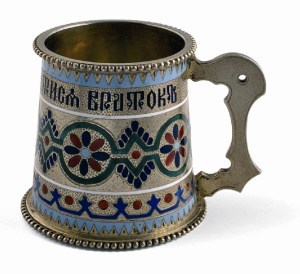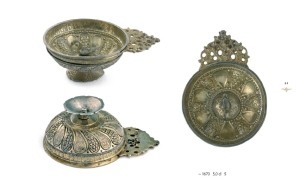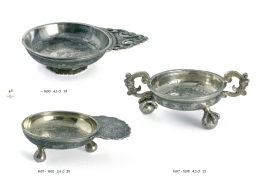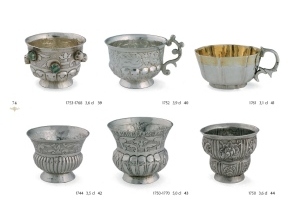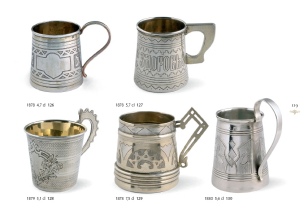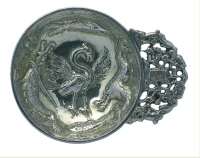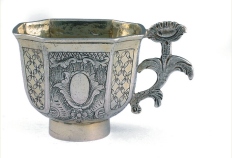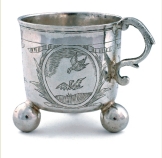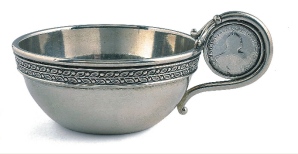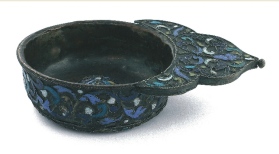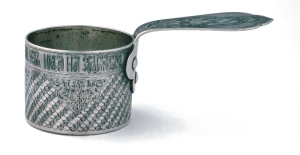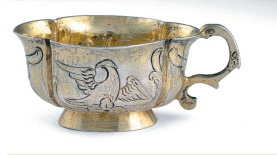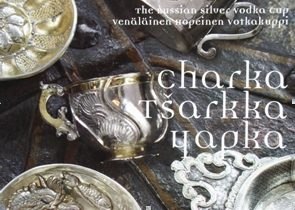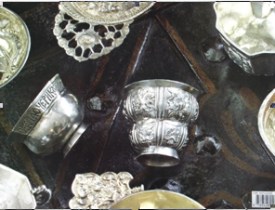 ASSOCIATION OF SMALL COLLECTORS OF ANTIQUE SILVER
ASSOCIATION OF SMALL COLLECTORS OF ANTIQUE SILVERASCAS
| article # 68 |
|
next |
previous |
(click on photos to enlarge image)CHARKA EXHIBITION IN HELSINKI
The Russian word
English = Charka French = Tcharka German = Tscharka Finnish = Tšarkka, Sarkka Swedish = Tscharka, tjarka The word is rarely found in dictionaries however it appears in literature on the subject of antique silver, and is used in antique shops and auctions. The word is often translated as vodka or tot cup. It is rarely used in modern Russian. Charka is only one of the many different Russian silver drinking vessels. This reflects the importance of alcohol in the Russian culture. In addition to charka there is bokal, bratina, chara, charotska, chasha, korchik, kovsh, kruzhka, kubok, rjumka, stakan and stopa. All different in form and use but intended to use for drinking. These are all part of the Russian silversmith tradition but they also tell us about the russian cultural history. Charka has been an object of vertu which has been carefully designed. The charkas have changed their form during the years and each reign and period has given them its typical shape. You can see the features from the mid 17th century renaissance to baroque, rococoo, different stages of classism and the late 19th century panslavonic design. The early 17th century charkas were usually large and shallow. At that time, vodka was weak, only 15-20%. When the art of distilling developed, vodka became stronger and the charkas became smaller.
Perhaps the most common charka of this time is comprised of a cup with one foot and a horizontal handle. It is adorned with sea monsters and large birds, a popular motive being Jonah and the whale. Only a limited number of charkas are available from the first quarter of the 18th century. The style changed at the turn of the century and the charkas started to resemble traditional goblets. The most common shape of the 18th century was one of a thistle flower often with a scroll handle attached to it in a vertical position. From the early 19th century, glass replaced silver as the material of drinking vessels. Thus there are few charkas on the market from this period. Also the style changed and the 18th century designs were no longer appearing on the market. Later in the 19th century rich panslavonic design became dominant. At turn of the 20th century silversmith profession reached a new level with several suppliers to the court like Faberge, Grachev, Khlebnikov, Occhinnikov, Sazikov among others. You can learn more from a recently published book
|
Kari Helenius
|
